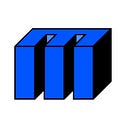Published in
2 min readNov 27, 2019
1126 Update
<!DOCTYPE html>
<meta charset="utf-8">
<body>
<script src="//d3js.org/d3.v3.min.js"></script>
<script>
var width = 960,
height = 500;
var nodes = d3.range(200).map(function() { return {radius: Math.random() * 12 + 4}; }),
root = nodes[0],
color = d3.scale.category10();
root.radius = 0;
root.fixed = true;
var force = d3.layout.force()
.gravity(0.05)
.charge(function(d, i) { return i ? 0 : -2000; })
.nodes(nodes)
.size([width, height]);
force.start();
var svg = d3.select("body").append("svg")
.attr("width", width)
.attr("height", height);
svg.selectAll("circle")
.data(nodes.slice(1))
.enter().append("circle")
.attr("r", function(d) { return d.radius; })
.style("fill", function(d, i) { return color(i % 3); });
force.on("tick", function(e) {
var q = d3.geom.quadtree(nodes),
i = 0,
n = nodes.length;
while (++i < n) q.visit(collide(nodes[i]));
svg.selectAll("circle")
.attr("cx", function(d) { return d.x; })
.attr("cy", function(d) { return d.y; });
});
svg.on("mousemove", function() {
var p1 = d3.mouse(this);
root.px = p1[0];
root.py = p1[1];
force.resume();
});
function collide(node) {
var r = node.radius + 16,
nx1 = node.x - r,
nx2 = node.x + r,
ny1 = node.y - r,
ny2 = node.y + r;
return function(quad, x1, y1, x2, y2) {
if (quad.point && (quad.point !== node)) {
var x = node.x - quad.point.x,
y = node.y - quad.point.y,
l = Math.sqrt(x * x + y * y),
r = node.radius + quad.point.radius;
if (l < r) {
l = (l - r) / l * .5;
node.x -= x *= l;
node.y -= y *= l;
quad.point.x += x;
quad.point.y += y;
}
}
return x1 > nx2 || x2 < nx1 || y1 > ny2 || y2 < ny1;
};
}
</script>
